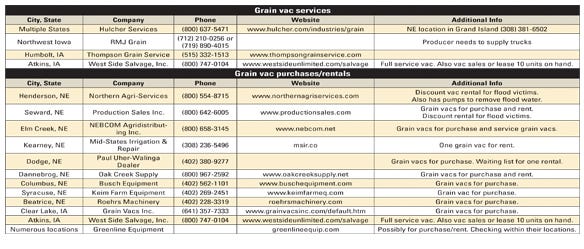April 1, 2019

By Jenny Rees
Recently, Nebraska Extension shared a CropWatch article from Iowa State University on Flooding and Stored Grain, which included these key points:
• Flood-damaged grain is adulterated grain because of the potential for many contaminants to enter through the water. This grain should be destroyed, never blended.
• Flood Damaged Grain Hay Disposal, a resource from the Nebraska Department of Environmental Quality, outlines options for disposing of flood-soaked grain, including land application, burning or disposal in a lined landfill. Resources also are available to help with composting livestock carcasses.
• There may be an opportunity to remove the good grain on top of the flooded grain, either from the top or side — but not down through the damaged grain. Keep in mind the reclaim conveyors and pits under bins contain floodwater as well.
• When stored grain is flooded, the moisture won't travel more than a foot above the floodwater line. Remove all the good grain before doing anything with the bad portion. Do not start aeration fans on flooded bins.
• Have the entire structure and related electrical components inspected by a qualified electrician to verify that nothing is still being electrified before acting to salvage grain.
• Safety steps include being aware of signs of failure when working around bins containing wet grain: sheered bolts, doors misaligned, bin separation from the foundation, etc.
• Have a plan for where you're moving the grain that's being removed from the bin. Elevators and ethanol plants in flooded areas may not be able to accept additional grain for a period of time.

A grain vacuum is a tool to remove grain from the top and sides of the bin while avoiding the flood-damaged grain in the bin. Growers have had questions regarding where to obtain grain vacuum services or buy or rent grain vacuums, and the accompanying list of providers is intended to save growers time in finding this information.
Rees is a Nebraska Extension educator. She can be reached at [email protected] if you provide grain vacuum services and wish to be added to this list.
This report comes from UNL CropWatch, which is solely responsible for the information provided and is wholly owned by the source. Informa Business Media and all its subsidiaries are not responsible for any of the content contained in this information asset.
You May Also Like




